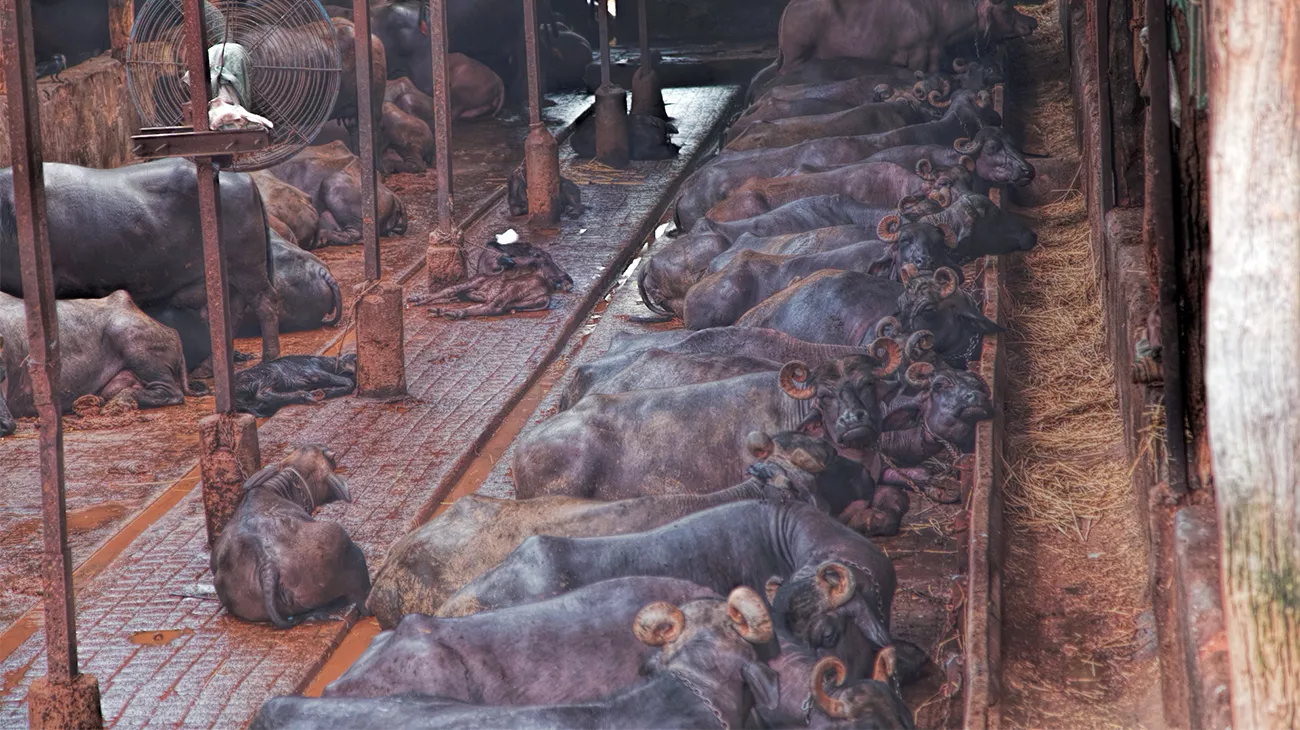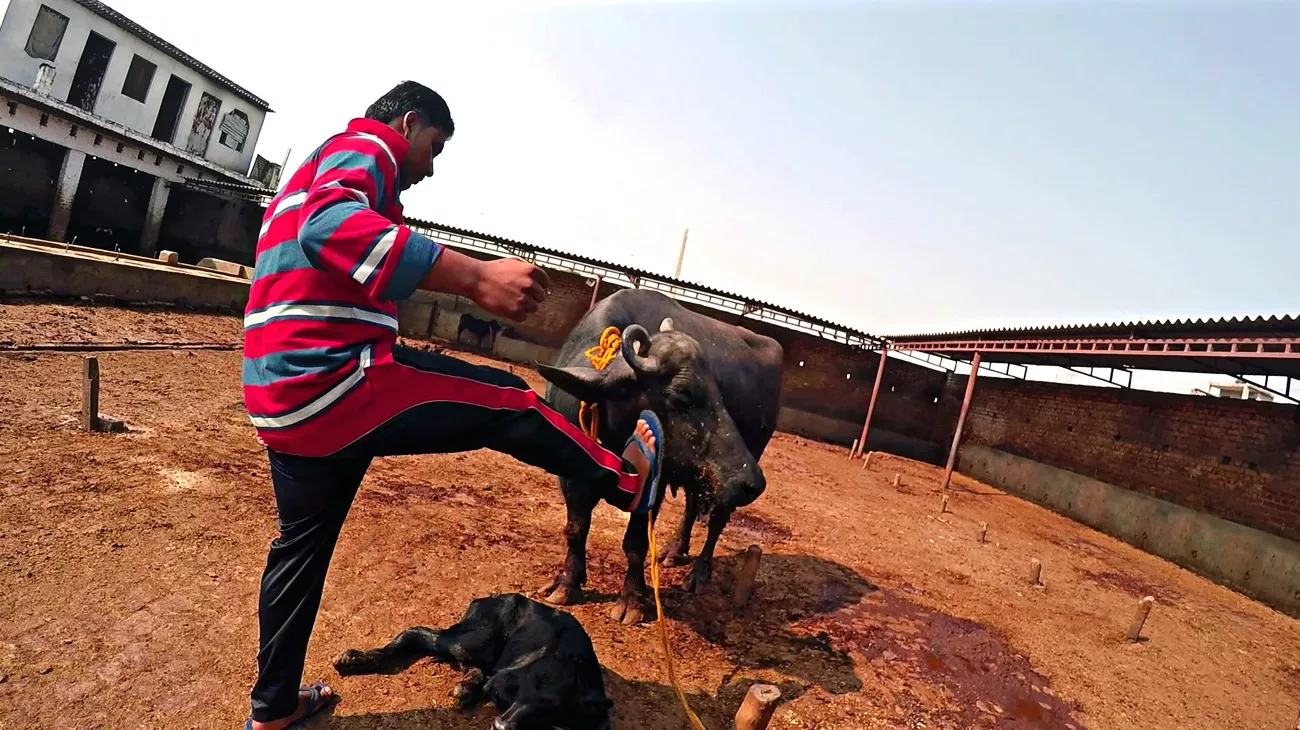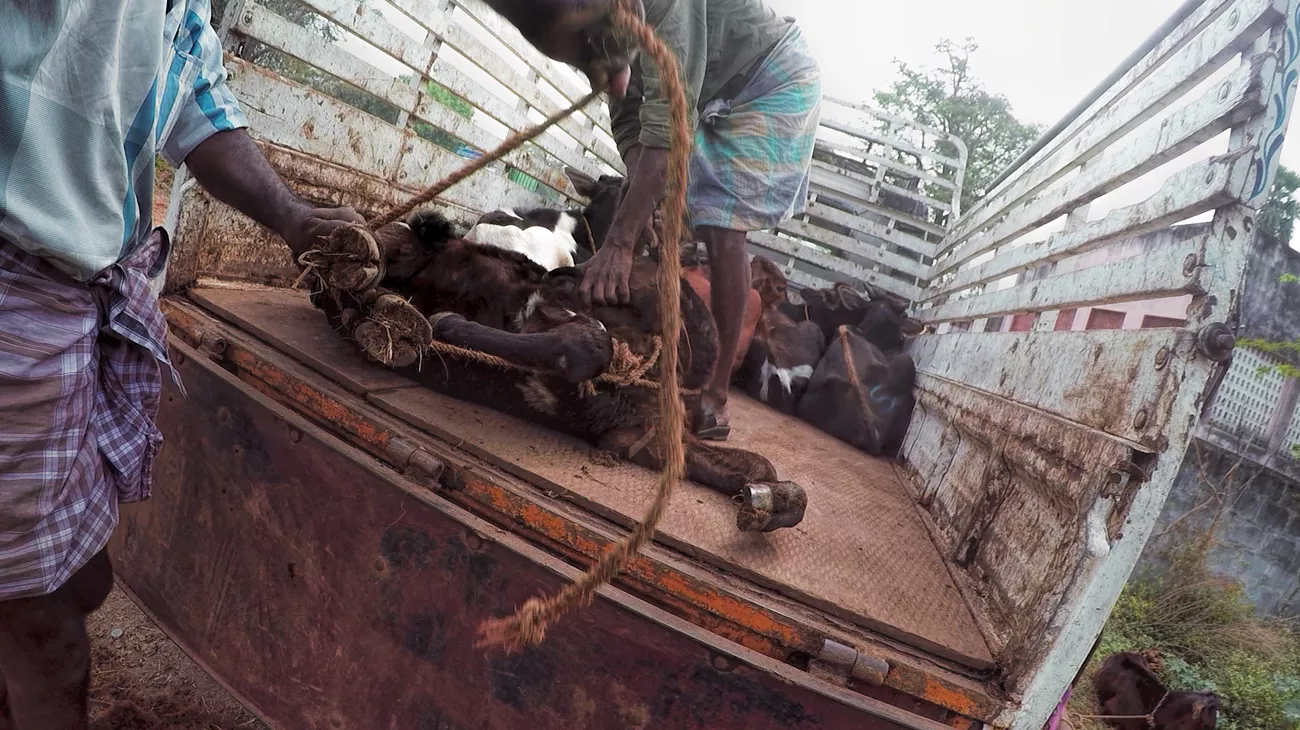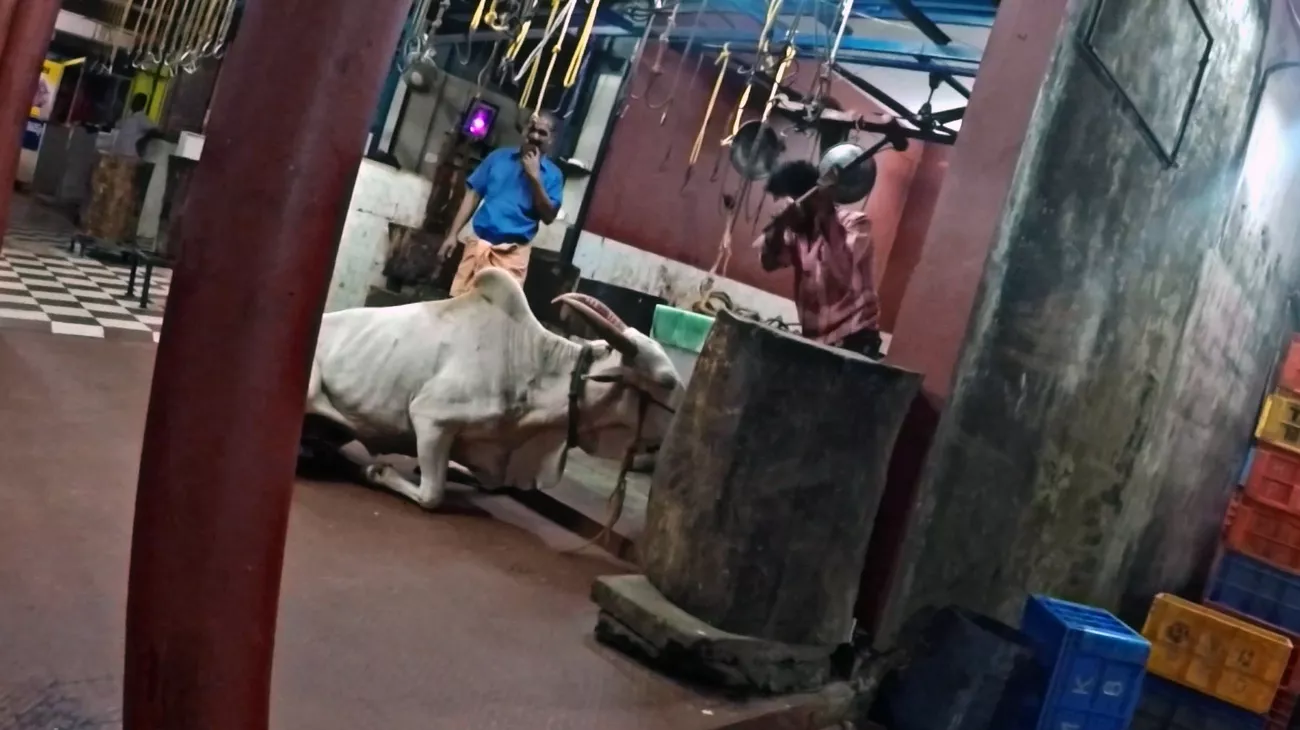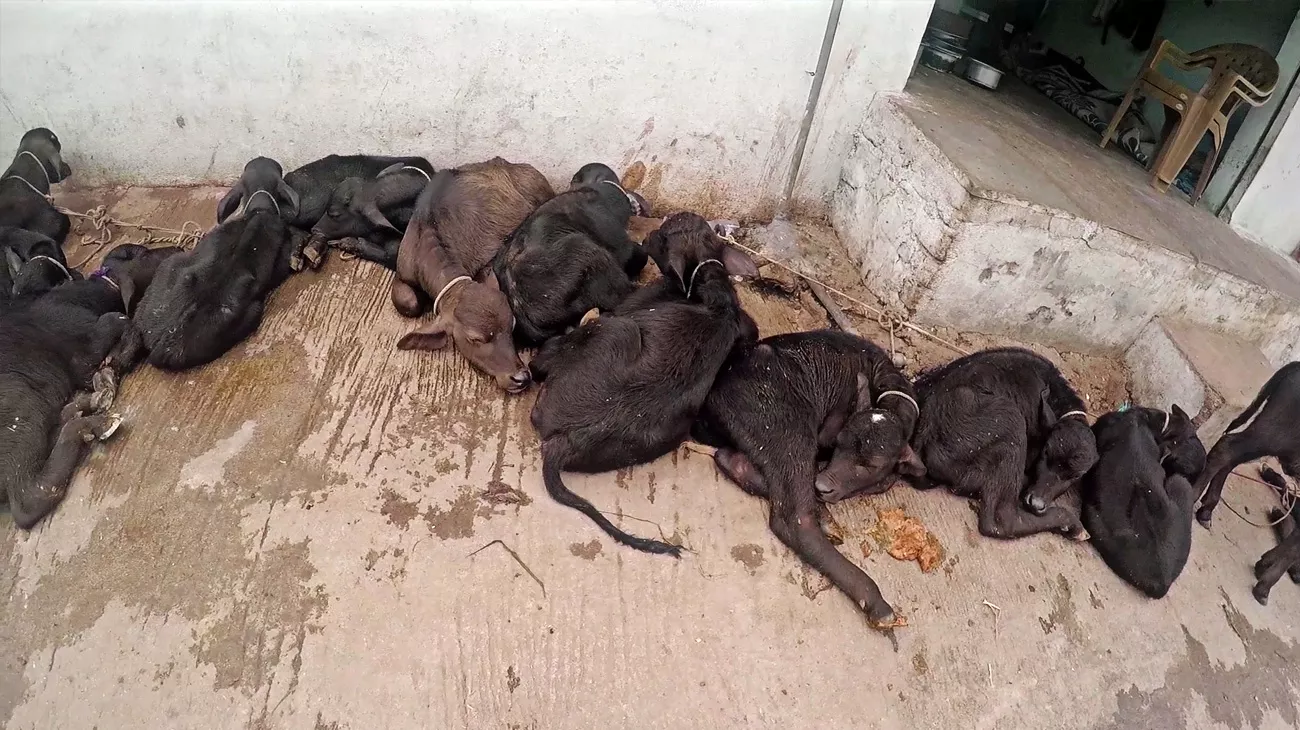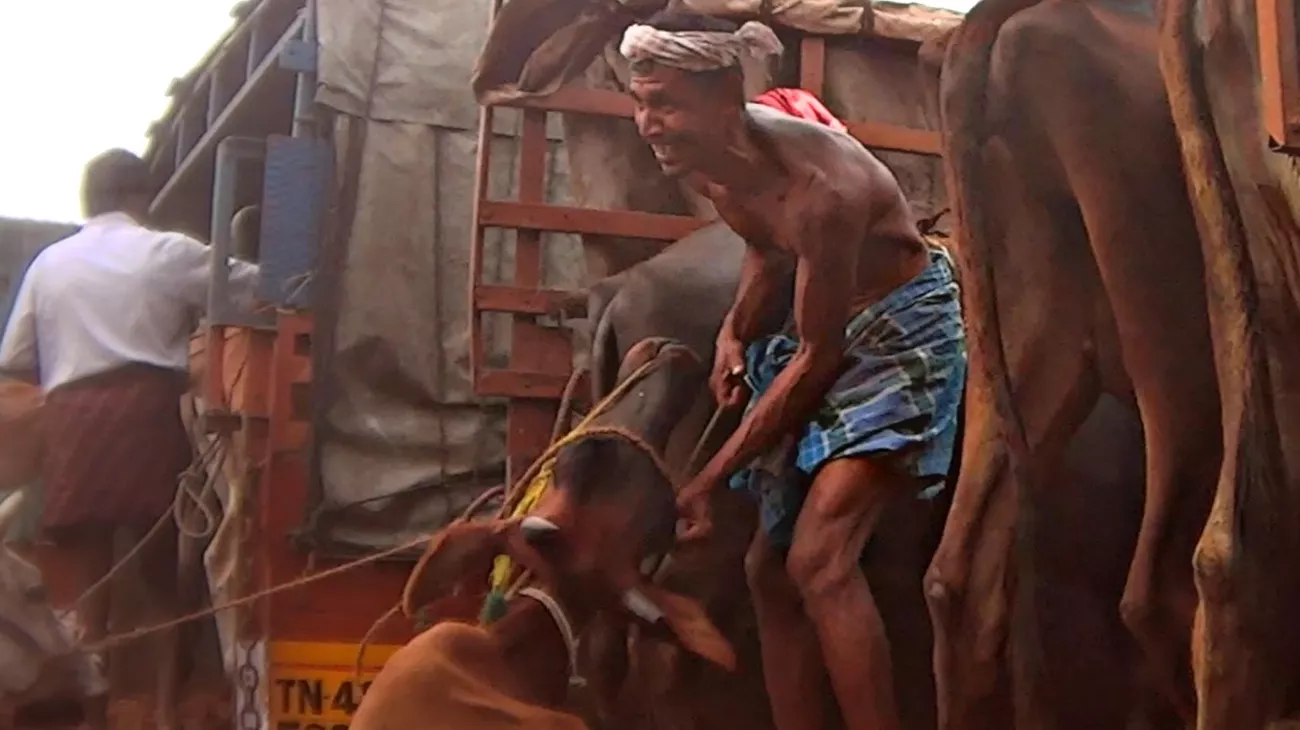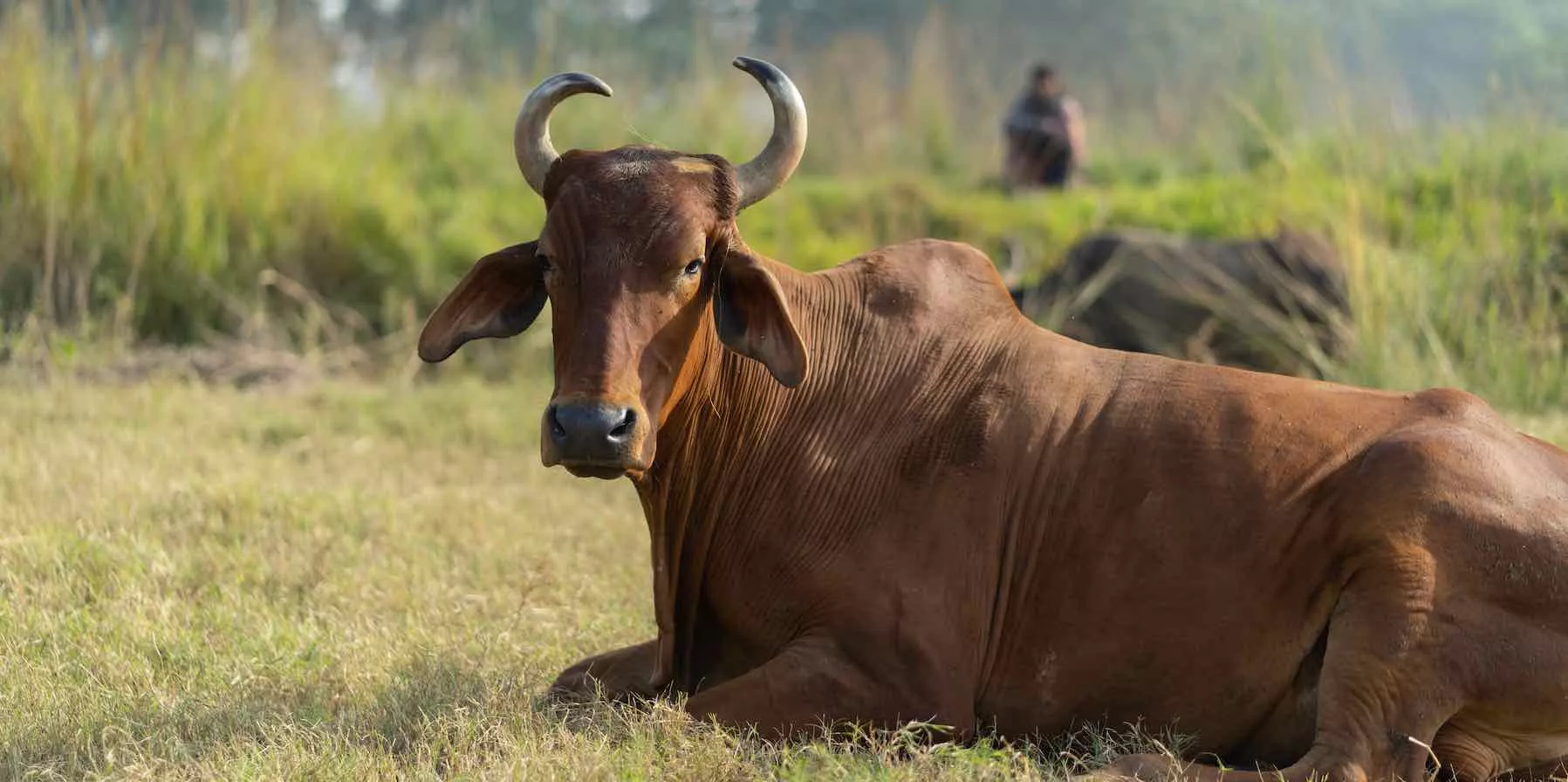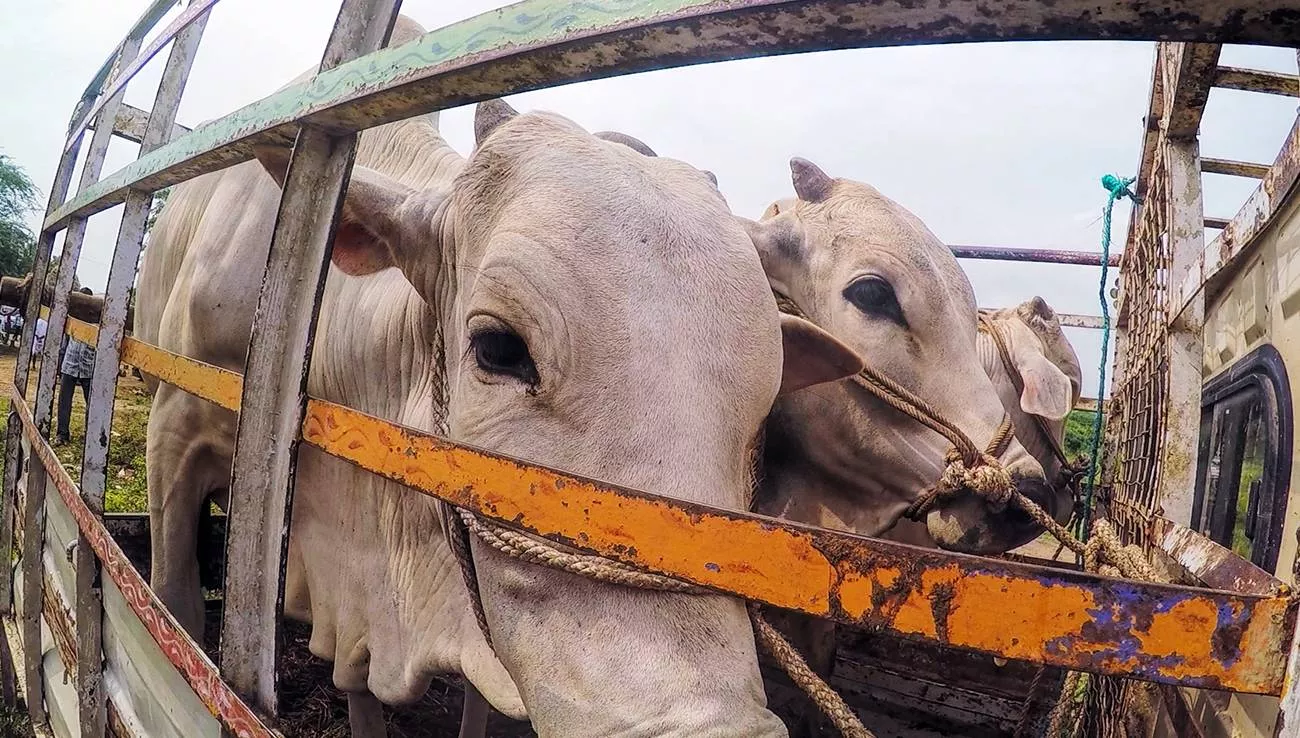
India’s deadly dairy
sign the petition
REVEALS THE HIDDEN COST OF DAIRY
Each day we find little moments of joy in sips of tea, scoops of ice-cream, or in a bite of our favorite mithai, but little do we know about their source. Could these fleeting joyous moments mean only pain and suffering to somebody? In a country like India where vegetarianism is widely known and practiced, many relate meat with cruelty and killing. Did you know that there are people who don’t consume milk at all and their numbers are increasing. Now you would wonder why? because animals are not killed for milk? Well, you may think that way but the reality is far from it. Let’s meet the real source of milk- Dairy Animals.
ANIMAL EQUALITY CONDUCTED AN INVESTIGATION COVERING SMALL, MEDIUM AND LARGE DAIRIES ACROSS THE DIFFERENT STATES OF THE ENTIRE COUNTRY. THE FACTS PRESENTED HERE ARE STANDARD PRACTICES IN ALL KINDS OF DAIRIES IN VILLAGES AND CITIES.

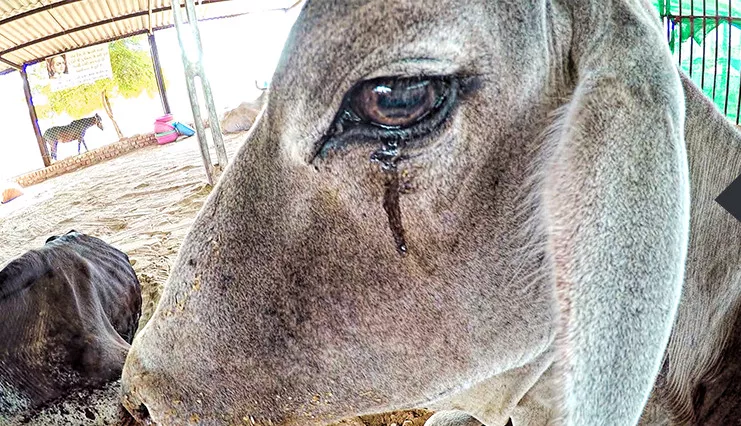
DID YOU KNOW?
Cows and buffalos are intelligent and sentient animals. Every animal has a distinct personality. Just like us, they feel various emotions like love, fear, pain and joy. Advertisers make us falsely believe that dairy animals live happily with their babies and we just take a portion of their milk. But the reality is no way closer to this, they are abused, their babies are taken away from them and they are made to go through a never-ending cycle of cruelty.
LIFE OF A COW IN THE MILK INDUSTRY
CONCEIVING
The dairy animals are made to reproduce not through natural mating but through artificial insemination (AI). AI is practiced on a large scale in dairies of all sizes. The process involves collecting semen from bulls by unnaturally mating them with other bulls known as ‘teasers’, who are raised to be docile by cruel means like beating.
Semen collected from such tormented bulls is inserted into the uterus of the female animal, often by inexperienced men with unsterile equipment in unhygienic conditions. This process is repeated year after year until her body finally gives up.
NEW BORN’S FATE
The male calves are of no use to the owner and are therefore sold for slaughter or starved till death. This is a very common practice among dairies irrespective of their size. The female calf is often ill-fed and kept away from her mother. Colostrum, the first milk which is essential to a baby for building the foundation of immunity, is also taken away from them and sold to humans. It is a common to see crying mothers and calves in dairies.
MILKING
Workers allow the calf to suckle just enough to the get the mother to release the milk, and then the calf is brutally pulled and tied away. The separation of the baby from the mother makes her withhold the milk. To counter this, the dairy owners use an illegal hormone called Oxytocin or stuff the dead calf’s head or body with hay to make the mother falsely believe that it’s her baby.
RITUAL CRUELTY
Just like us, these innocent animals feel fear and pain; they want to be safe from harm and injury. But at dairies, they are often brutally hit with sticks, punched and chained so tight that they can barely move. Because of such short tethers, they are forced to sit and sleep in their own faeces. We found that sexual abuse-pinching sensitive genitals is the most common way of making the animals submissive.
NO MEDICAL CARE
In order to save costs, the dairy owners do not provide the required medical care for animals. The common conditions like Mastitis, Foot and mouth infections, vaginal infections are left untreated many times. Injuries from nose-roping, hitting and milking are considered trivial! Some of the owners even resort to abandoning the sick animals which makes them susceptible to accidents, attacks and consumption of garbage containing plastic.
SALE
A cow/buffalo’s average lifespan is 15-20 years; because of all these cruelties, their body begins to deteriorate at 4-5 years. As she grows weak, her milk production declines; such animal is considered as a loss and sold for the slaughter. Agents of slaughterhouse hover around dairies frequently to check on unproductive animals. Whilst making these deals, the value of meat as well as the hide is considered. In our investigation interviews, many farmers blatantly accepted the sale of animals for slaughter.
TRANSPORT
Each animal now faces a dangerous journey to the slaughterhouse. Just before loading them onto the trucks, they are milked one last time to ensure not a drop goes to waste. To make them submissive while loading, handlers use brutal means like twisting tails, shoving sticks into the sensitive genitals or rubbing chilly in their eyes. Their neck and legs are tied together and they are stuffed over each other so that not a single square foot space goes for waste. They are made to travel in such conditions for days without any food or water. Some die even before reaching the slaughterhouse.
SLAUGHTERED
Once these animals reach the slaughterhouse, they are brutally pulled out and aligned in queues. Often it’s workers, not the veterinary doctors who mark animals as ‘fit for slaughter’, despite they being sick and injured. They’re brutally killed, where the animal is slammed on the floor and throat is slit several times, In certain regions they practice ‘hammer slaughter’ which involves bludgeoning animal’s head repeatedly with a sledgehammer. It is also noticed that the animals are alive while they are skinned. The living animals are made to watch this torture, waiting for their turn while their companions are being slaughtered. The workers are seen cracking jokes and laughing while they slaughter the animals.
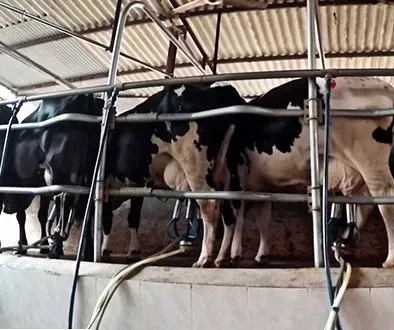
Dairy
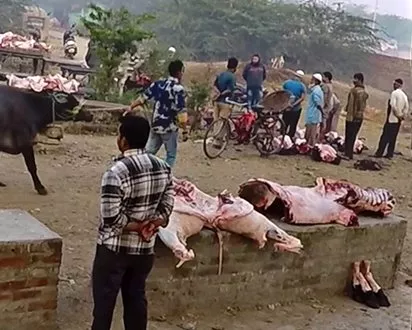
Meat
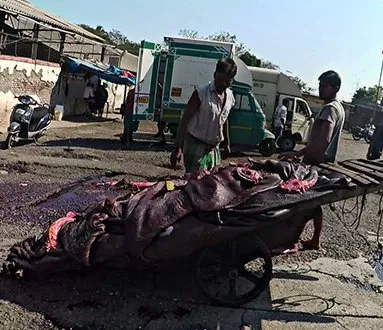
LEATHER
DAIRY=MEAT=LEATHER
YOUR CHOICE MAKES A DIFFERENCE
Dairy, meat and leather industry are interdependent. The dairy industry churns out a large number of unproductive animals for slaughter every day, which in turn helps the meat and leather trade thrive. When an animal is sold to the butcher the value of both the meat as well as the hide (skin) is taken into consideration.
YOU CAN HELP THESE ANIMALS BY REPLACING DAIRY PRODUCTS WITH PLANT BASED ALTERNATIVES
BRIEF REPORT ON THE INVESTIGAION
Animal Equality conducted an investigation covering small, medium and large dairies across the different states of the entire country. The facts presented here are standard practices in all kinds of dairies in villages and cities.
TYPES OF DAIRIES COVERED
DAIRY, MEAT AND LEATHER
There is no such thing as beef cattle in India as in other countries where cattle are specifically raised for beef. Therefore dairy, meat and leather industry are interdependent. As per the United States Department of Agriculture’s report , there were 327,300,000 dairy animals in India in 2013. The dairy industry provides large number of unproductive animals for slaughter everyday. For e.g. in 2013 42,100,000 cattle were slaughtered in India. Through this report we’ve documented how the meat and leather industry is heavily dependent on the dairy industry for its supply.
OTHER AREAS COVERED
- Transport of animals to cattle markets
- Sale of animals for slaughter at the cattle markets
- Slaughter of animals at legal and illegal slaughterhouses
- Illegal ways of slaughter
- Tanneries
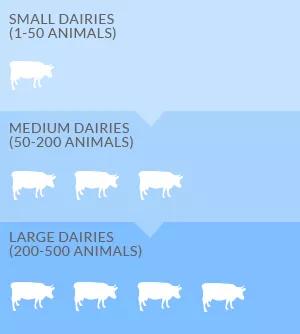
GEOGRAPHICAL COVERAGE OF THE DAIRY INVESTIGATION
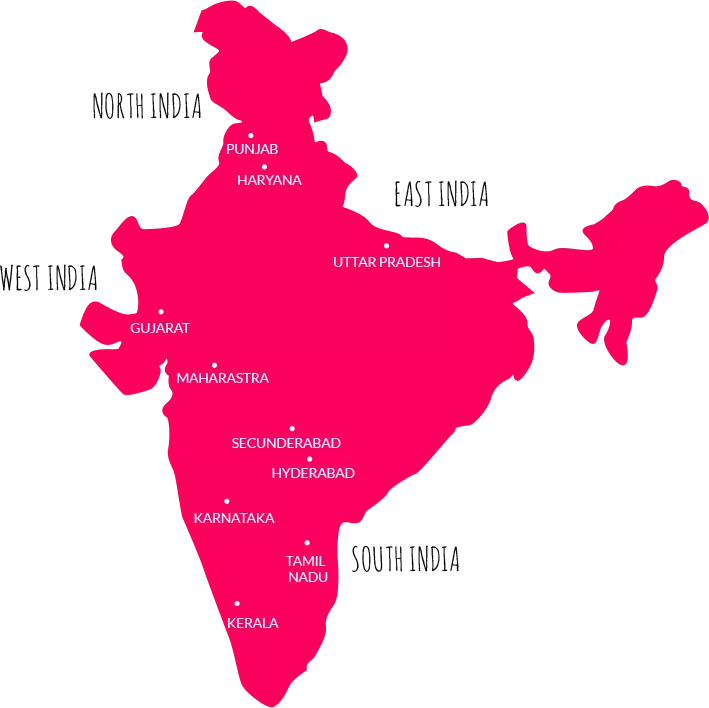
INVESTIGATION DETAILS
In total 107 dairy farms, 2 semen collection centres, 11 cattle markets, 8 slaughterhouses, 7 meat markets and 5 tanneries, situated in different parts of the country were documented by Animal Equality. The dairy animals which were documented were buffaloes and cattle.
1. REPRODUCTION
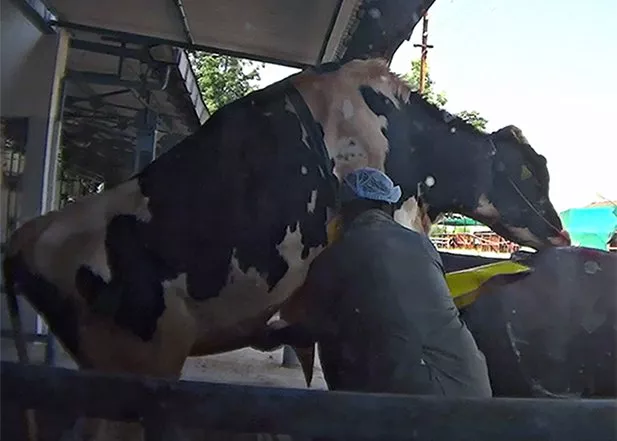
The semen is collected bulls which belong to perceived higher gene value. They are kept in dark sheds almost always out of the sunlight, as exposure to sunlight on their vital organs is believed to have a negative effect on sperm count. These bulls are unnaturally made to mate with other bulls known as ‘teasers’, who are raised to be docile by cruel means like beating.
A piercing is done in the septum of the nose to fix a nose ring. This area of the nose is sensitive and with just a slight jerk, an intense pain is delivered. We found workers jerking the nose rings violently. One of the bulls was bleeding profusely from his nose as the worker was brutally pulling him, We did not find anyone treating or attending to the bleeding. The industry has developed a variety of tools and means to maximize the quality and quantity of the semen. From methods like false mounting, where a bull is teased for few minutes so that his final mounting is most ‘yielding’ to the special artificial vagina (AV), which has special rubber material with temperature control.

Artificial insemination (AI) is performed on a very large scale in the dairy industry. According to the report of National Development Dairy Board, over 80% cattle are now bred through artificial insemination. It’s performed not just in medium and large scale dairies but also by a farmer with just one or two female animals, both in cities and villages.
The men inserting the semen into the reproductive system of the female animals are usually inexperienced. The equipment used for the insertion of the semen were often unsterile and the men we interviewed declared that they do not believe in using gloves while the performing the procedure as it is not required. This often results in infections in vaginal region of the female animals.
2. MILK PRODUCTION

Dairyman: “You can’t be emotional when you run a dairy. You have to sell animals and make money out of it!”
Because of the large-scale use of artificial insemination,the male calves from the dairies are of no use to the owner since they do not provide milk. Therefore they are sold for slaughter. This is a very common practice among dairies irrespective of their size. Animal Equality has several cases on record, wherein dairy owners admitted that they sell male calves since they do not produce milk & the male does not yield anything and taking care of them just adds to the cost.
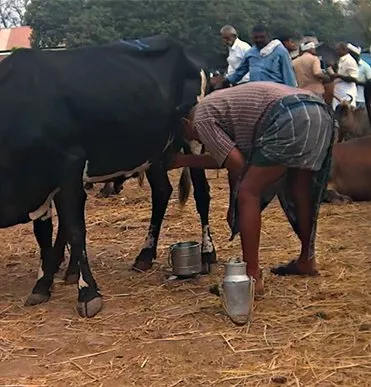
Less producing
animal sale
In addition to male calves any female animal who gives less than the expected quantity of milk (between 3 and 5 litres at one time) is also sold for slaughter. Earlier dairy owners would sell female animals who would stop giving milk. When Animal Equality investigators questioned owners on this, they said “it is a loss for us to keep a cow who doesn’t give enough milk.”

Due to the maternal bond cow wants to provide the milk only to her baby. During milking, it is common to see cows withholding milk. During such instances, oxytocin is injected into the cows. This is done despite the ban on the use of oxytocin for dairy animals. Considering the cruelty and harmful effects of it on consumers, the government allows the sale of it to registered veterinary practitioners only. The use of oxytocin is so rampant that pools of drainage around dairies filled with empty oxytocin bottles were documented by Animal Equality investigators.
Oxytocin is sold at Rs.55 in unlabeled plastic bottles and kept in colorful cardboard boxes which are used for selling mithai (Indian sweets). The men milking the animals keep a syringe filled with oxytocin, if they feel any animal is withholding milk, they shove the needle into the animal’s neck. The use of oxytocin is known to disturb the reproductive cycle of female animals thereby reducing their life expectancy. And the consumption of milk from cows injected with oxytocin is known to cause severe hormonal imbalances among its consumers.

Animal Equality investigators observed the floors of the dairies were perpetually filled with dung and urine. The stench from the dairies is unbearable. Dead bodies of animals, some of which are diseased were left to rot next to the living animals which can lead to diseases.
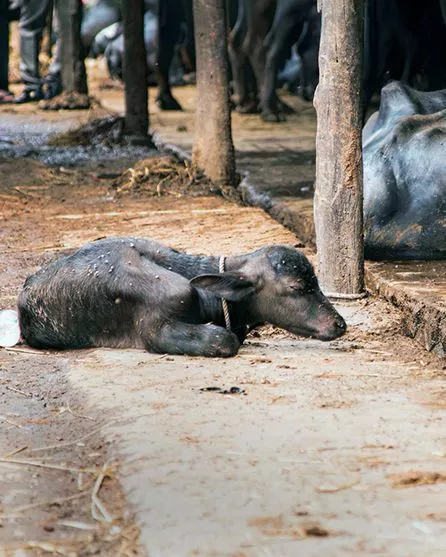
New born calves were separated from their mothers within one hour from their birth so that they don’t drink their mother’s milk. The maternal bond is the same in all mammals. Therefore the separation of the baby from the mother leads to emotional distress which was clearly visible from the loud cries of the mother and the calves.
The animals in dairies are kept tied their entire lives, many times to a rope so small that they can barely move. They are left with no choice but to sit in their own faeces and urine for days because of which they develop foot infections. Animal Equality investigators documented workers throwing calves and beating and kicking animals. Workers were also seen twisting the tail to an extent where the sound of bones breaking could be heard and in some cases animals were subjected to sexual abuse- men would pinch the sensitive genitals of the female animals or shove a stick into it.
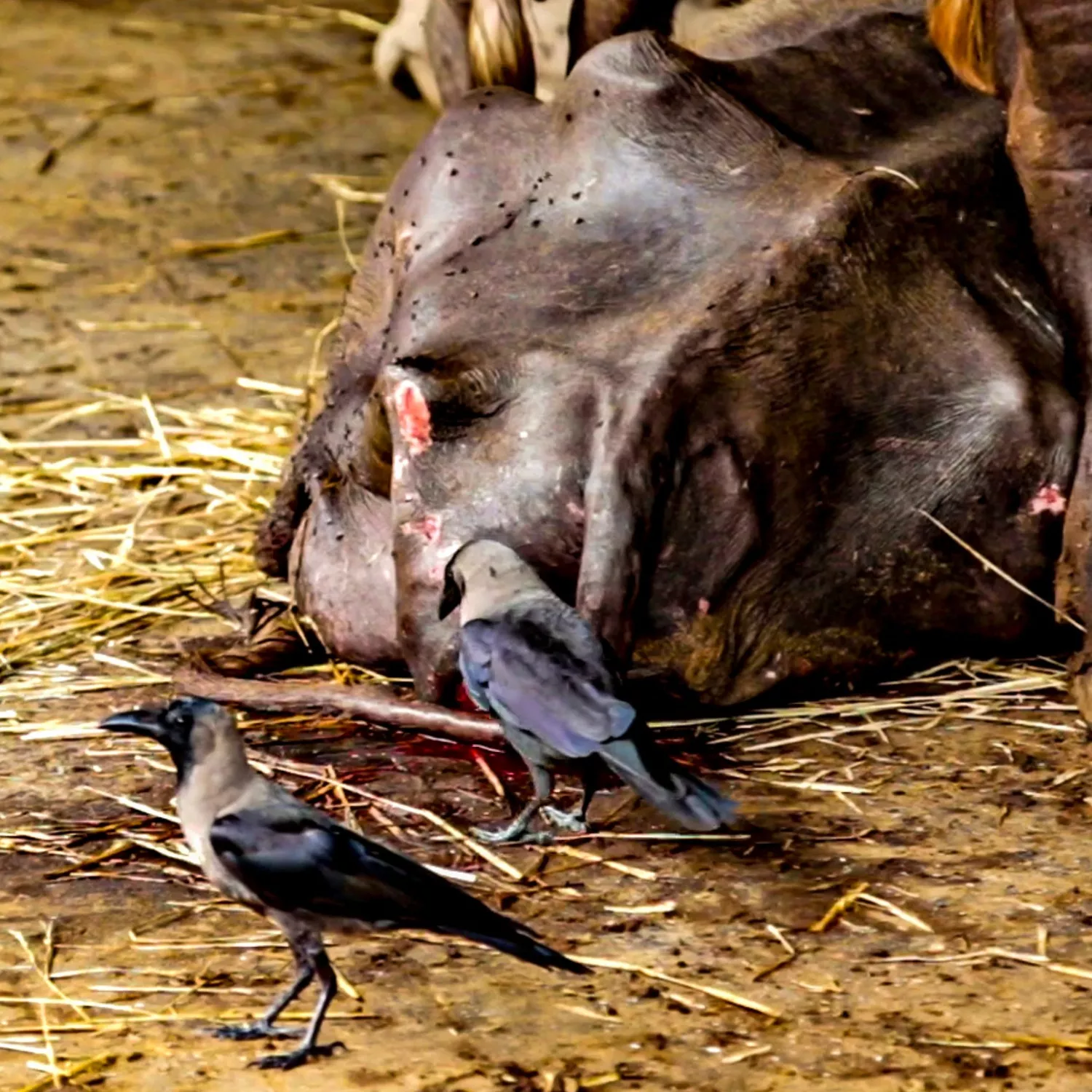
veterinary care
In order to save costs thereby maximizing profits, the dairy owners do not believe in providing the required medical care for animals. Bruises, injuries, broken horns were left untreated. Bleeding from vaginal region was a common sight. In one case we saw a buffalo’s organs had prolapsed. Crows were eating the prolapsed portion while the buffalo was sitting in clear signs of pain without receiving any medical care.

While most owners sell their animals for slaughter, some resort to abandoning them, which makes the animals susceptible to accidents, attacks, consumption of garbage containing plastic, paralysis, etc. Animal Equality investigators documented many cases where acid was thrown on the animals leading to severe burns, they were run over by vehicles due to which they suffered from paralysis or fractures. In some villages, it was observed the men would round up all the abandoned cattle, tie 2-4 animals together by their neck and hit them incessantly so that they are hunted out from their village.
3. TRANSPORT

In the truck, they were stuffed like commodities. The calves’ legs are tied to their neck to make sure they are made compact and adult animals necks are tied to the overhead bar of the vehicle, so they don’t move.
More than 30 animals were stuffed in a truck which should not carry more than 6 animals as per the Transport Rules 1978. This was a common observation in all the cattle markets across the country visited by the Animal Equality investigators.
Many of them bleed, get seriously injured and some even die on the way to the slaughterhouse. They are made to travel in such conditions for many hours at a stretch or days without any food or water.
4. SLAUGHTER

In order to slaughter an animal, the veterinary official issues a ‘Fit for slaughter’ certificate considering all the rules. But this was blatantly violated as the workers themselves marked the animals for slaughter. The animals were slaughtered in front of each other leaving the animals waiting in line in fright. There was no stunning which was performed prior to the slaughter. It is also noticed that the animals are alive while they are skinned.
Even though the Supreme Court of India has banned ‘hammer slaughter’, Animal Equality investigators documented it taking place blatantly. Many of the slaughterhouses visited were either illegal or were served notices for violation of existing laws.
All of the above findings from our investigation are a common practice in the dairy and slaughter industry and these practices are blatant violations of the PCA act and the rules formed therein. They also violate the various orders from the High Court and Supreme Court of India.
5. HUMAN WELFARE VIOLATIONS
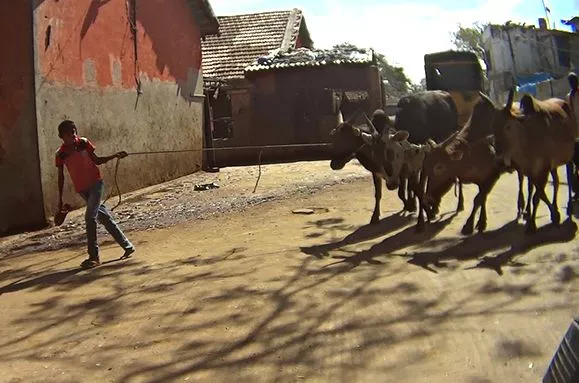
In slaughterhouses, their young minds get affected by all the violence and gore they are forced to participate in. And in tanneries, they are forced to work with harsh chemicals, which leads to life-threatening diseases like cancer.
6. ENVIRONMENT

More Insights
